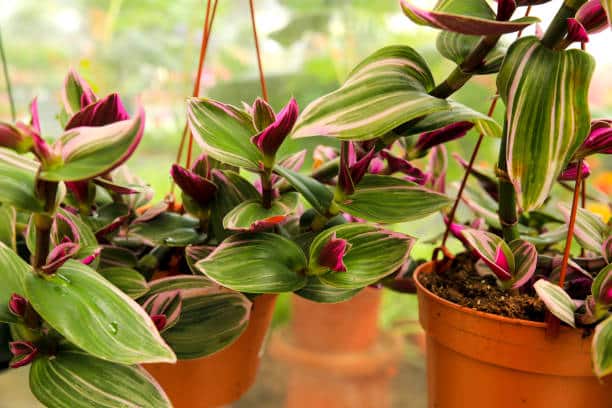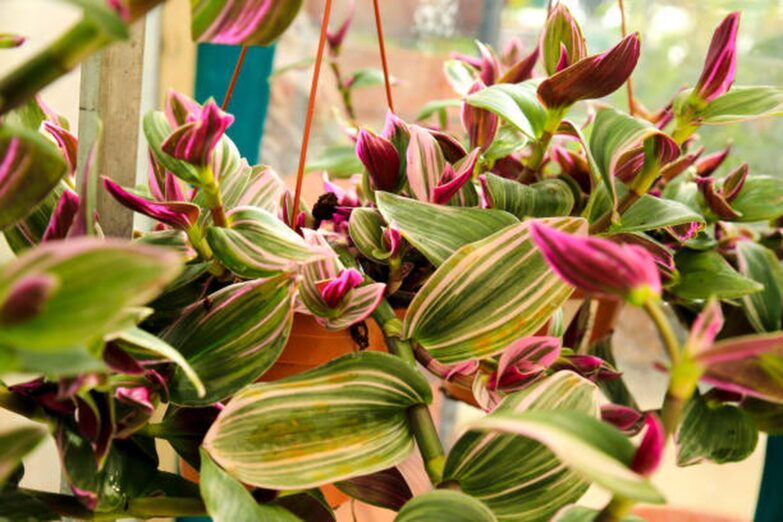The Nanouk plant, known scientifically as Tradescantia Nanouk, is a captivating houseplant with strikingly vibrant foliage that adds a touch of whimsy and fantasy to any indoor setting. This plant’s colorful palette, coupled with its easy-going nature, makes it a highly sought-after addition to any indoor plant collection. In this in-depth guide, we’ll delve into the world of the Nanouk plant, exploring its origins, distinctive characteristics, and the essentials of its care and propagation to help you bring this enchanting houseplant into your own home.
Origins and Natural Habitat
A Cultivar with a Story
The Nanouk plant is a patented cultivar that originated from the rich biodiversity of South America. It is a member of the Tradescantia genus, which boasts over 70 species of perennial plants, all known for their ornamental value and adaptability to various growing conditions. The Nanouk plant was developed with the goal of creating a plant with strong, upright growth and colorful, large foliage – traits that make it stand out in any houseplant collection.
Adapting to Indoor Environments
Nanouk plants are incredibly versatile, adapting well to a variety of indoor environments. While they enjoy the warm and humid conditions reminiscent of their tropical origins, they can also tolerate lower light and humidity levels, making them a resilient and low-maintenance choice for indoor gardening.
Distinctive Characteristics of the Nanouk Plant
A Riot of Colors
The most captivating feature of the Nanouk plant is its colorful foliage. Each leaf boasts a stunning combination of green, pink, purple, and cream hues, creating a visual spectacle that adds a vibrant touch to any indoor space. The leaves are thick and succulent-like, with a fuzzy texture that further enhances their charm.
Flowers and Growth Habit
While it is primarily grown for its foliage, the Nanouk plant also produces small clusters of pink or purple flowers that add an extra layer of aesthetic appeal. The plant exhibits an upright growth habit, which, combined with its lush, cascading foliage, makes it an ideal choice for hanging baskets or as a standalone statement piece.
Caring for Your Nanouk Plant at Home

Light and Temperature Requirements
The Nanouk plant prefers bright, indirect light to maintain its vibrant foliage colors. However, it can also tolerate lower light conditions, albeit with a slower growth rate and less vibrant leaf coloration. The ideal temperature range for this plant is between 65 and 75°F (18 to 24°C), making it compatible with most indoor environments.
Watering and Fertilization
Nanouk plants prefer a well-draining soil that is kept consistently moist but not waterlogged. Water the plant thoroughly when the top inch of soil feels dry to the touch, and ensure that the excess water is able to drain away to prevent root rot. During the growing season (spring and summer), feed your Nanouk plant with a balanced houseplant fertilizer diluted to half-strength once every month.
Humidity and Soil Preferences
Being a tropical plant, the Nanouk appreciates higher humidity levels. However, it can adapt to average household humidity. If your home’s air is particularly dry, consider grouping the Nanouk with other plants, using a humidity tray, or employing a humidifier to raise moisture levels. As for soil, a well-draining potting mix, such as a peat-based mix with added perlite for increased drainage, works well.
Common Pests and Diseases
Pests
While the Nanouk plant is generally resilient, it can occasionally attract common houseplant pests such as spider mites, aphids, or mealybugs. If you notice webbing, discolored leaves, or tiny insects, treat the plant with an appropriate insecticide or a mild soap solution. Regularly wiping the leaves with a damp cloth can also help prevent pest infestations and keep your plant looking its best.
Diseases
Most diseases that affect the Nanouk plant are related to improper watering. Root rot can occur if the plant is left in standing water, while leaf spot may appear if the foliage is kept too wet. To prevent these issues, always allow the top inch of soil to dry out between waterings and avoid splashing water on the leaves. Providing good air circulation around the plant can also help to prevent disease.
Propagating Your Nanouk Plant
Stem Cuttings
One of the easiest ways to propagate your Nanouk plant is by taking stem cuttings. Choose a healthy stem with at least one leaf, cut just below a node, and place the cutting in water or moist potting mix. Keep the cutting in a warm, bright location, and within a few weeks, you should start to see new roots forming.
Division
Division is another effective propagation method for the Nanouk plant. This involves separating the plant into smaller sections, each with its own roots and foliage. This can be done during repotting, making it a convenient way to multiply your plant collection and share it with fellow plant lovers.
Conclusion
The Nanouk plant, with its vibrant, whimsical foliage and easy-care nature, truly lives up to its reputation as a must-have houseplant for adding a touch of fantasy to your home. Whether you’re a seasoned indoor gardener or just starting your plant journey, this captivating plant is sure to bring you much joy and satisfaction. By understanding and implementing the tips and guidelines outlined in this comprehensive guide, you’ll be well-equipped to provide your Nanouk plant with the care it needs to thrive.

